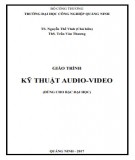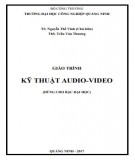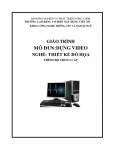
(MULTIMEDIA AND GAMES)
IT4440
Đa phương tiện
và các ứng dụng giải trí

Nội dung môn học
Tuần
Chủ đề Số tiết
1
Giới
thiệu về môn học
1
– 5
Phần
I. Tổng quan về thông tin đa phương tiện và các kỹ thuật xử lý 15
1
Chương
I: Nhập môn Multimedia 1
1
Chương
II: Một số kiến thức cơ bản 1
2
Chương
III: Ảnh 4
3
Chương
IV: Màu 3
4
Chương
V: Video 3
5
Chương
VI: Audio 3
6
–
Phần
II. Một số ứng dụng đa phương tiện
Chương
V: Multimedia- ứng dụng và giải trí
Chương
VI: Ứng dụng web
Chương
VII: Ứng dụng mobile
Chương
VIII: Ứng dụng 3D
Chương
IX: Ứng dụng Game
Bảo
vệ Bài tập lớn, Tổng kết ôn tập

Nội dung môn học
Tuần
Chủ đề Số tiết
1
Giới
thiệu về môn học
1
– 5
Phần
I. Tổng quan về thông tin đa phương tiện và các kỹ thuật xử lý 15
1
Chương
I: Nhập môn Multimedia 1
1
Chương
II: Một số kiến thức cơ bản 1
2
Chương
III: Ảnh 4
3
Chương
IV: Màu 3
4
Chương
V: Video 3
5
Chương
VI: Audio 3
6
–
Phần
II. Một số ứng dụng đa phương tiện
Chương
V: Multimedia- ứng dụng và giải trí
Chương
VI: Ứng dụng web
Chương
VII: Ứng dụng mobile
Chương
VIII: Ứng dụng 3D
Chương
IX: Ứng dụng Game
Bảo
vệ Bài tập lớn, Tổng kết ôn tập

Mục tiêu của chương
Một số khái niệm
Video là gì ?
Thu nhận video như thế nào ?
Các chuẩn video
Nén video
Soạn thảo và xử lý video
Truyền video
Tổng kết chương
Tài liệu tham khảo
Chương V: Video

Người học sẽ:
Được trang bị kiến thức về cách thức tạo,
biểu diễn, lưu trữ video
Được giới thiệu nguyên lý và phương pháp
nén, soạn thảo, xử lý và truyền video
Sau khi kết thúc chương, người học :
Nắm được kiến thức cơ bản video
Biết vận dụng một số kỹ thuật, công cụ xử lý
ảnh để tạo và soạn thảo video
V.1 Mục tiêu của chương


























